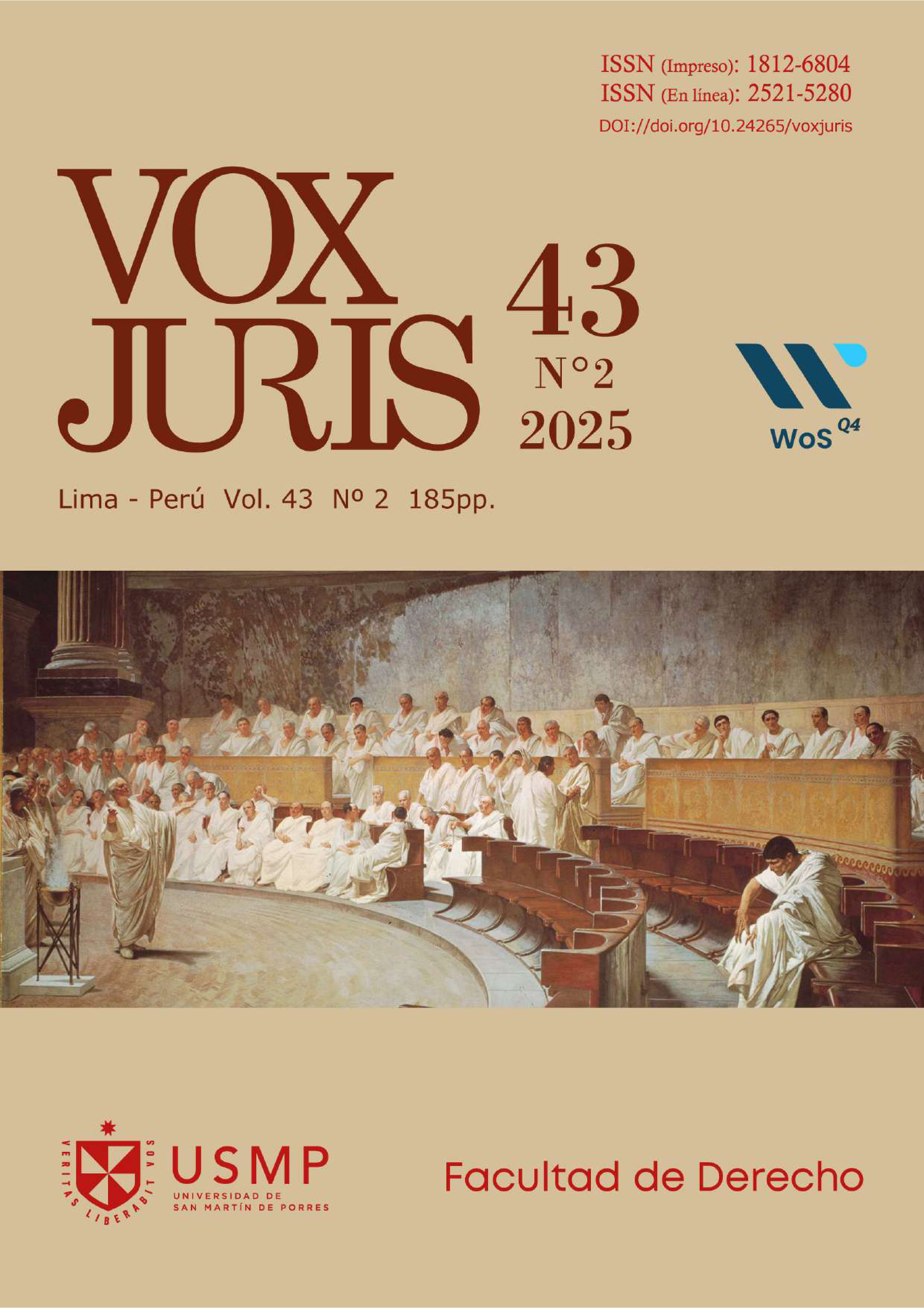THE NEED TO REFORM FAMILY PROPERTY LEGISLATION IN PERU: TOWARD THE INCLUSION OF SINGLE-PERSON HOUSEHOLDS
Abstract
The article analyzes how family structures in Peru have evolved and how Article 495 of the Civil Code does not adequately reflect this diversity. Currently, only 21.8% of family units in Peru correspond to the traditional family, while 61.4% adopt other forms, such as single-parent, same-sex, and blended families, and the current legislation remains focused on
protecting only traditional family units,
excluding those who do not fit this model.
The analysis of the Registry Court’s resolutions shows that Peruvian legislation maintains a strict interpretation, excluding those without a spouse or dependent children from patrimonial protection. Although there has been some flexibility since 2013, these decisions have not effectively addressed the lack of protection for single-person households, leading to legal uncertainty.
The article compares Peruvian legislation with that of Mexico, Colombia, Argentina, and Brazil, where more inclusive approaches have been adopted to protect individuals without
traditional family ties. These legislations
reflect better adaptation to contemporary social realities.
The conclusion highlights the urgent need to reform the Peruvian Civil Code to include and adequately protect all family configurations, ensuring equitable access to patrimonial
protection and aligning with the principles of equality and non-discrimination enshrined in human rights.
Downloads
Downloads
Published
Issue
Section
License
Copyright (c) 2025 Enrique Mendoza Vásquez

This work is licensed under a Creative Commons Attribution 4.0 International License.
Los autores que publican en esta revista están de acuerdo con los siguientes términos:
- Los autores conservan los derechos de autor y garantizan a la revista el derecho de ser la primera publicación del trabajo al igual que licenciado bajo una Creative Commons Attribution que permite a otros compartir el trabajo con un reconocimiento de la autoría del trabajo inicial en esta revista.


